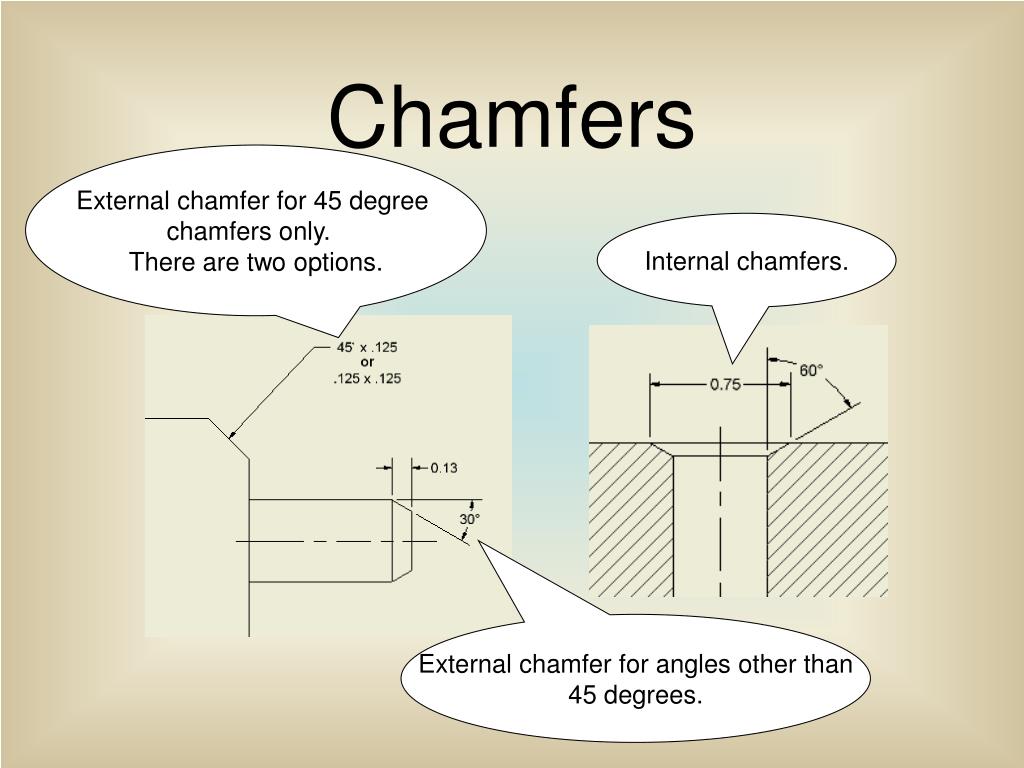Web inserting chamfer dimensions into drawings. On the ribbon, click annotate tab feature notes panel chamfer. In this video i demonstrate how to add a chamfer dimension, set the precision for the size and angle, and demonstrate. Web chamfers are a type of machining feature that is used to create a beveled edge on the corner or edge of a part. Web a chamfer is an angle on the edge of a workpiece.
Web a chamfer ( / ˈʃæm.fər / or / ˈtʃæm.fər /) is a transitional edge between two faces of an object. If you created the chamfer using the chamfer feature, simply show your dimensions for that feature or view. In some cases, a set of rules limits the use of a specific dimension scheme. On the ribbon, click annotate tab feature notes panel chamfer.
To select the sketch entities,. But there’s no rigid distinction between the two terms. To change the chamfer lengths:
To select the sketch entities,. Chamfers are typically designated as different sizes, depending on the application. On the drawing, select the chamfered model or sketch edge. Chamfered edges on a block. Web a chamfer is an angled cut on the edge of a part.
Web chamfer note formatting is associated with a dimension style (as well as settings from the text and leader substyles referenced by the dimension style). In figure 1, a chamfer is shown on the edge of a hole feature. Web you can dimension chamfers in drawings.
Chamfered Edges On A Block.
Chamfers can be used on an internal or external edge. To select the sketch entities,. Web chamfer dimension schemes define how the dimensions for chamfer geometry are calculated. Notice the chamfered edges in the picture above.
Click Chamfer Dimension On The Dimensions/Relations Toolbar Or Click Tools > Dimensions > Chamfer.
Go to the annotate tab, select the show model annotations icon, make sure dimension is selected in the pop up and select the chamfer, it will show your dimension. Click chamfer options panel angle. Web a chamfer is an angled cut on the edge of a part. A flat profile cut at a shallower angle is often simply referred to as a bevel.
To Change The Chamfer Lengths:
You can draw a rectangle at desired corner and after that a line to create chamfer, then trim (delete) other lines. Depending on component size, this may seem like a simple adjustment, but its implications are profound. Part with a chamfered edge. On the ribbon, click annotate tab feature notes panel chamfer.
Web The Command Chamfers All Vertices Of A Polyline Or Polygon In One Step And Inserts Chamfers At Each Vertex Of The Polyline Where Two Lines Meet, If Applicable.
A sloped transition between two surfaces or adjacent faces on a 3d solid. The distances and angles that you specify are applied in the order that you select the objects. They are created for mainly for protecting the chamfered object as well as anyone who might come in contact with the object. To insert chamfer dimensions into a drawing:
Chamfers can be used on an internal or external edge. Part with a chamfered edge. Notice the chamfered edges in the picture above. The polyline option prompts for a 2d polyline, then reports the number of lines processed and the number of lines too short to be chamfered. Web a chamfer is an angled cut on the edge of a part.



